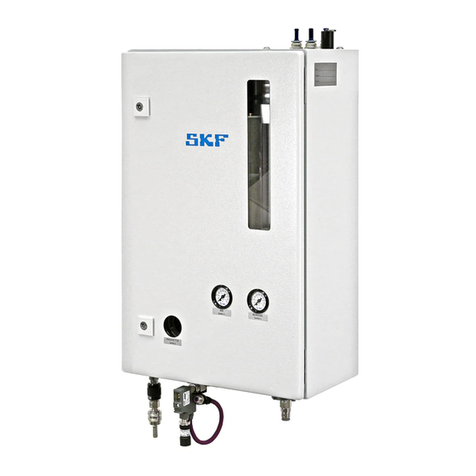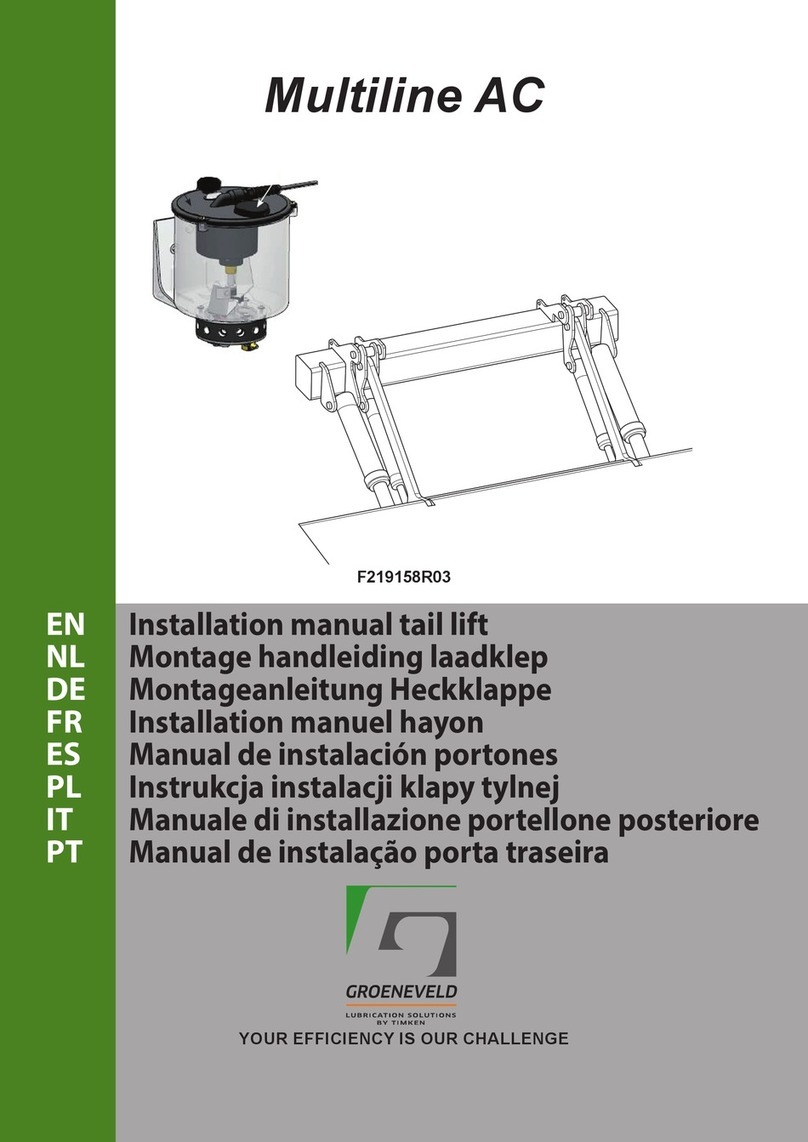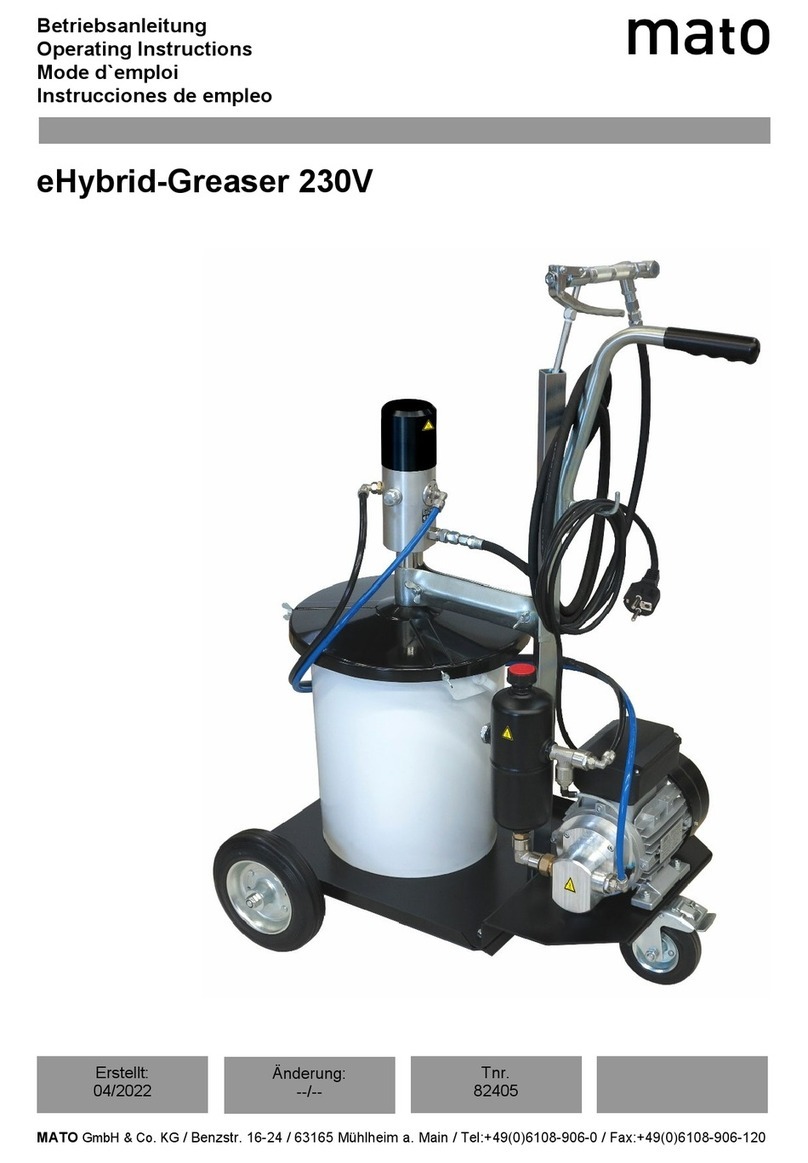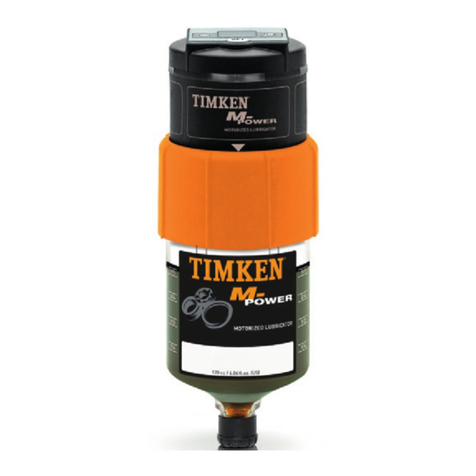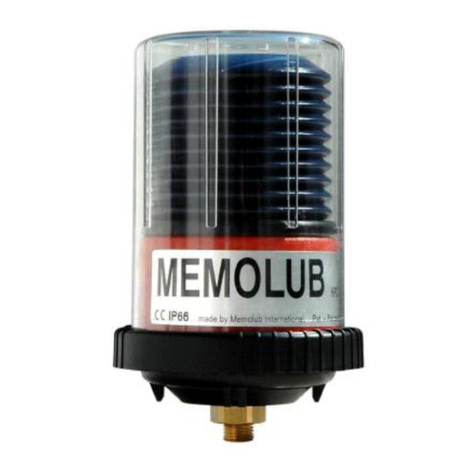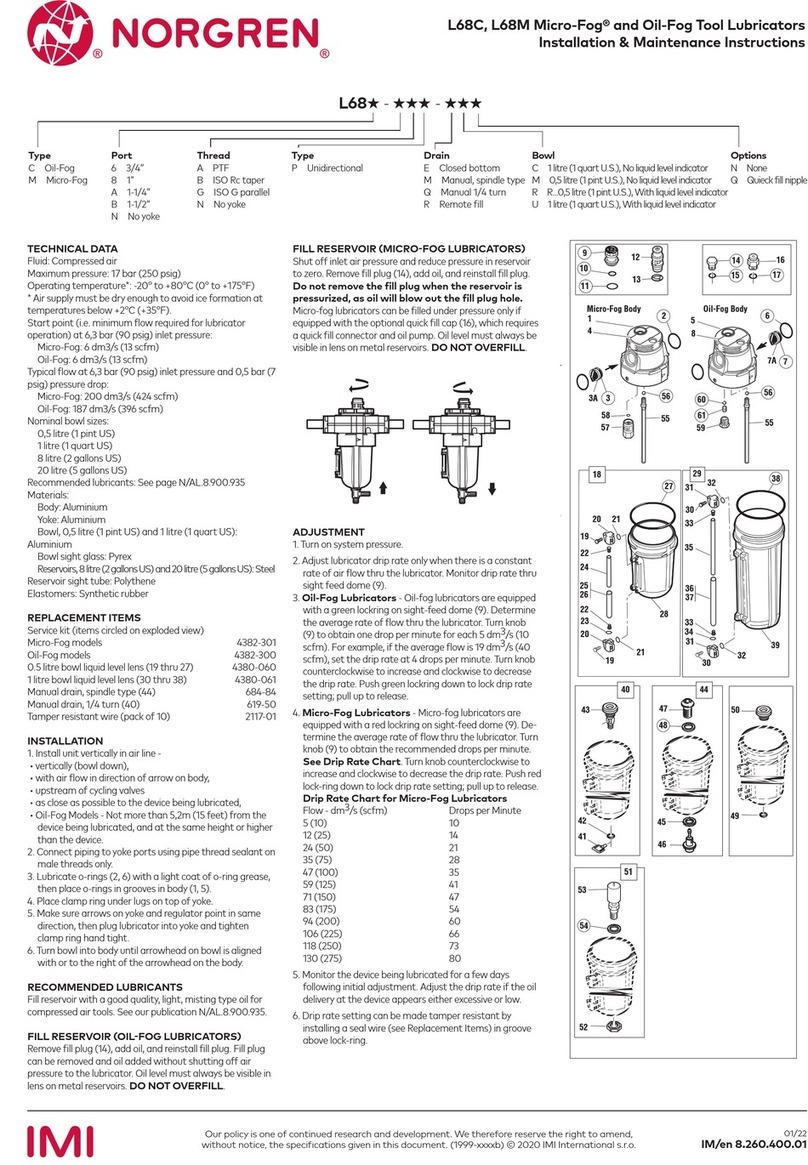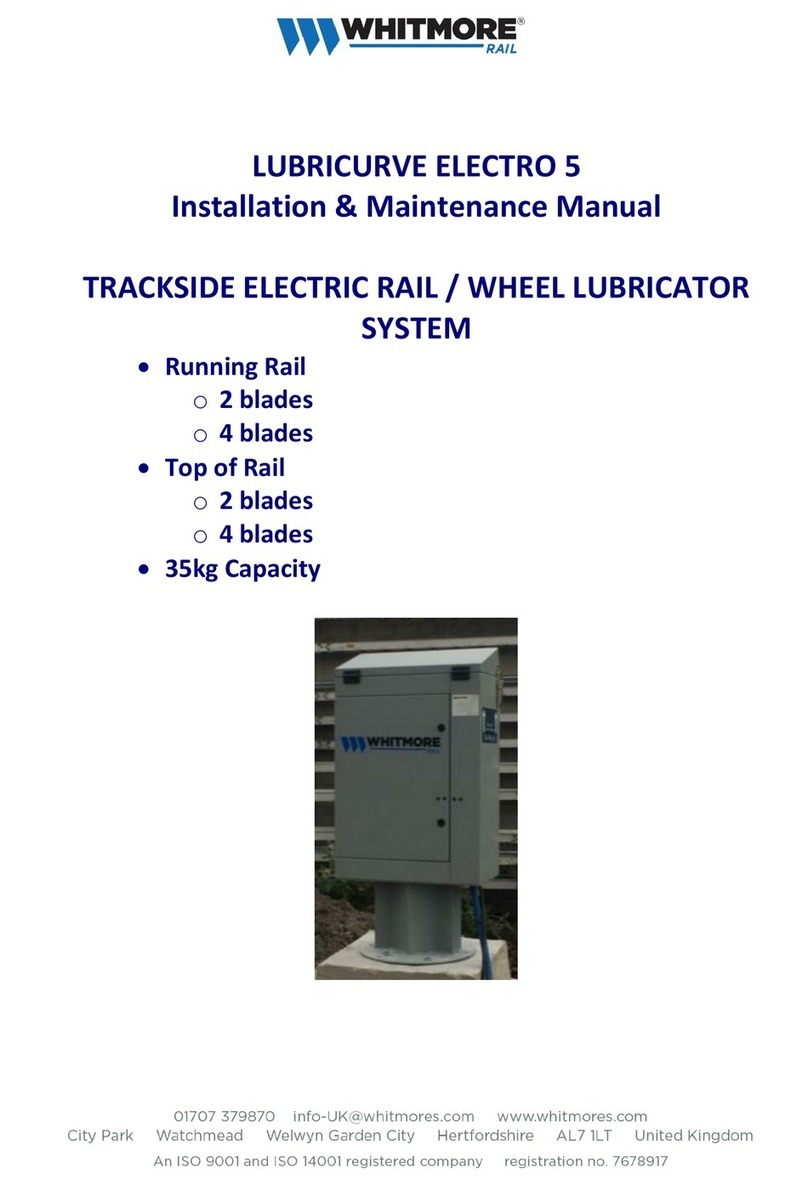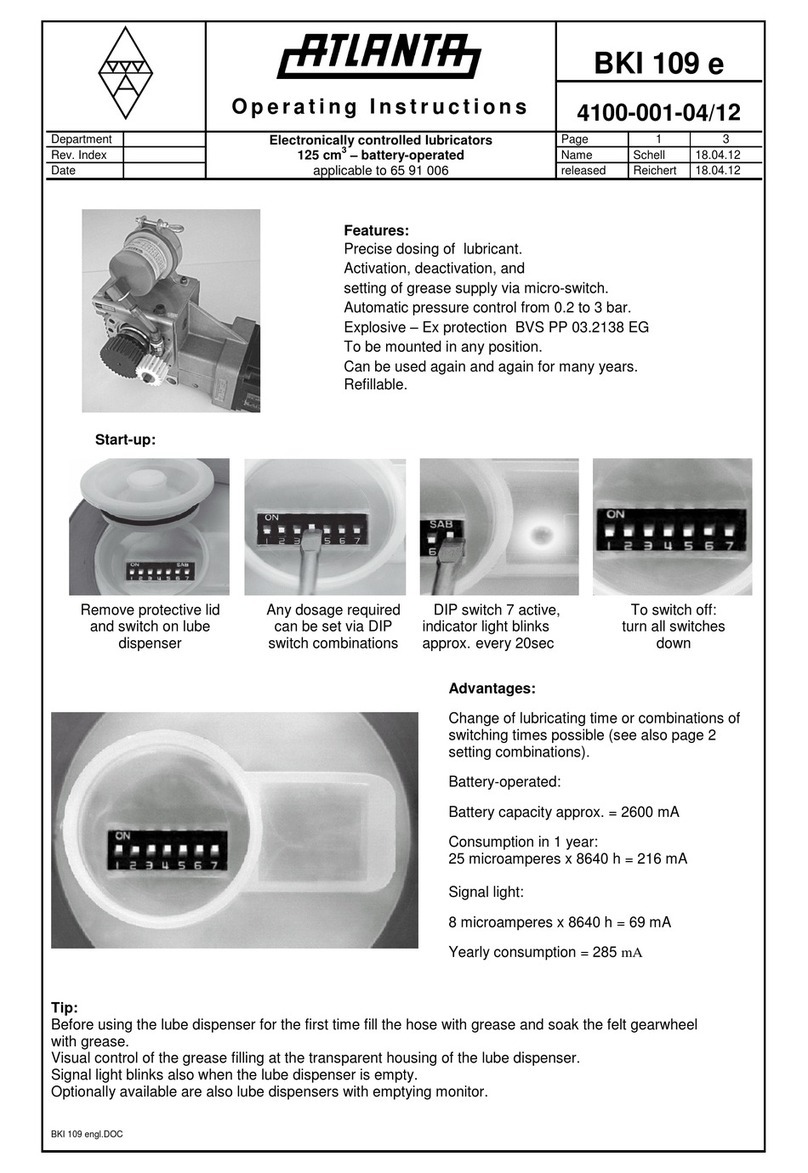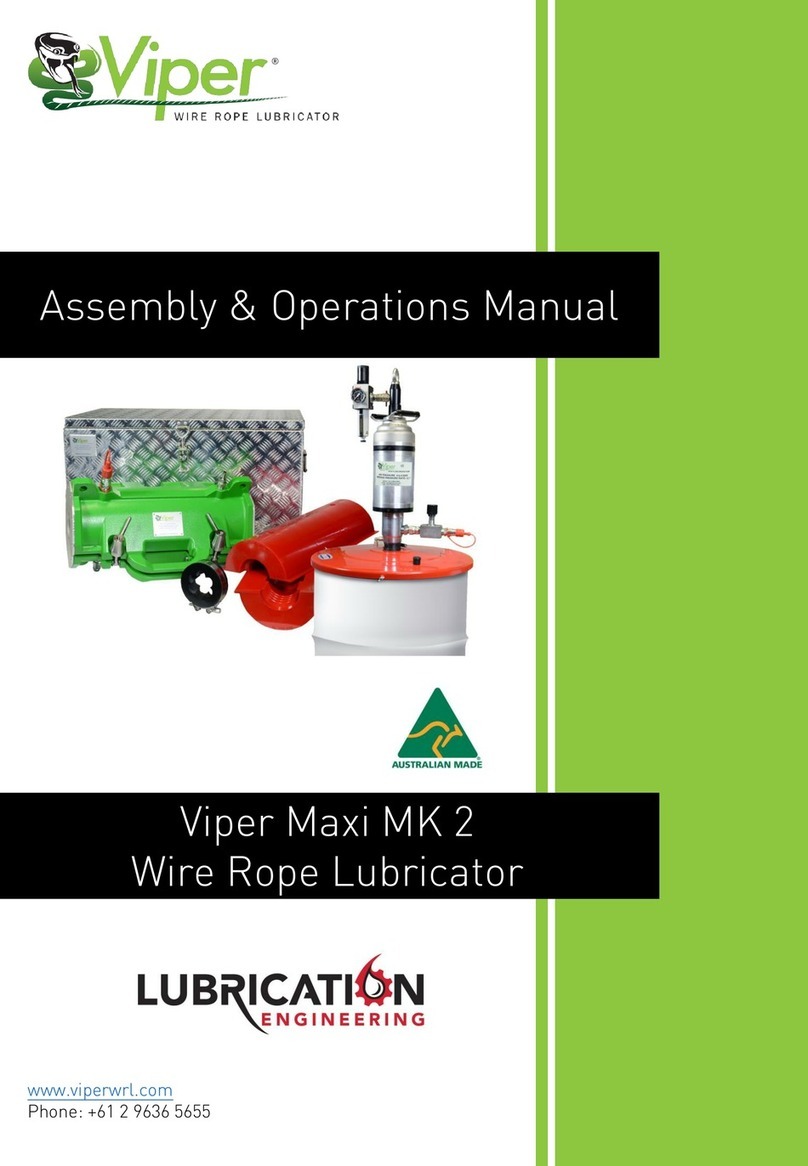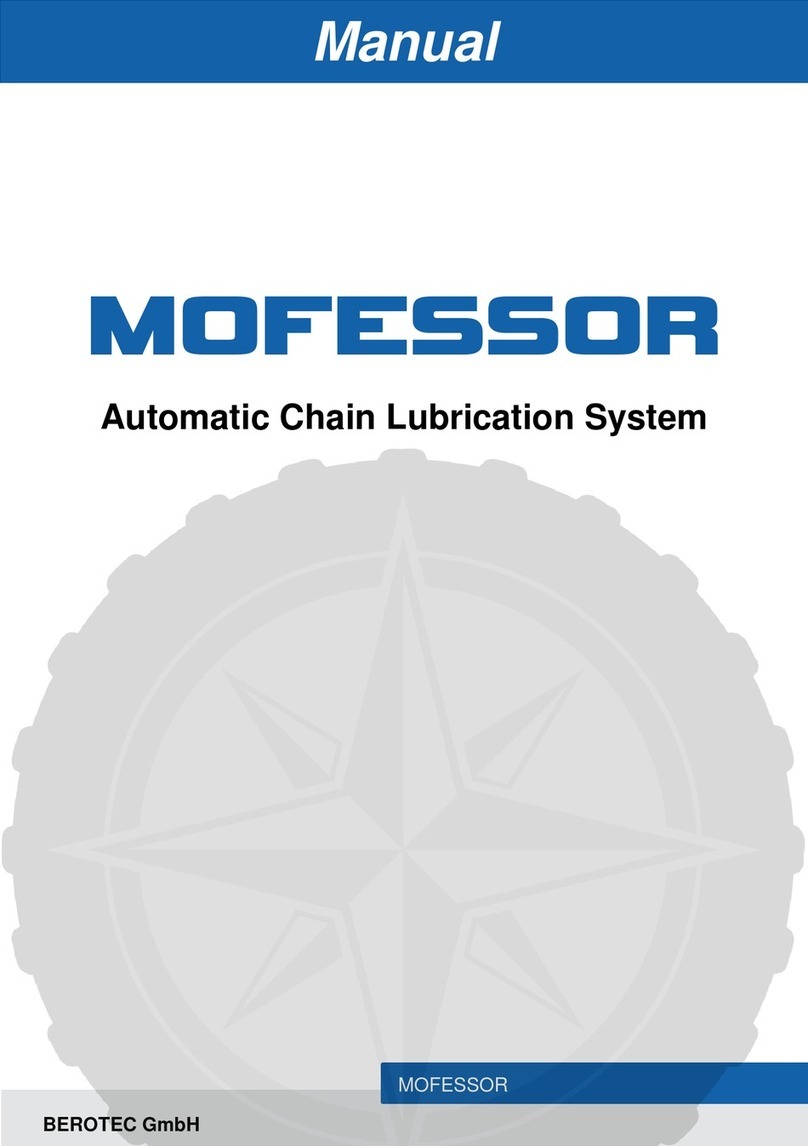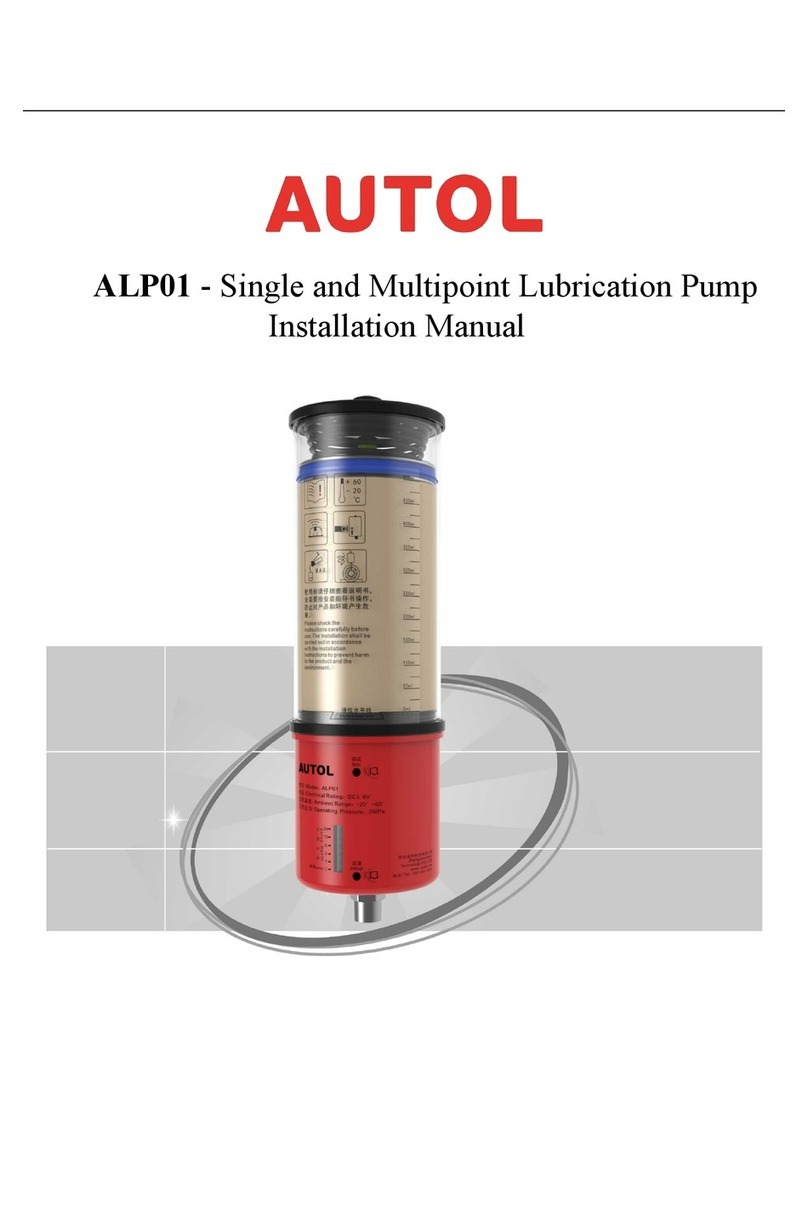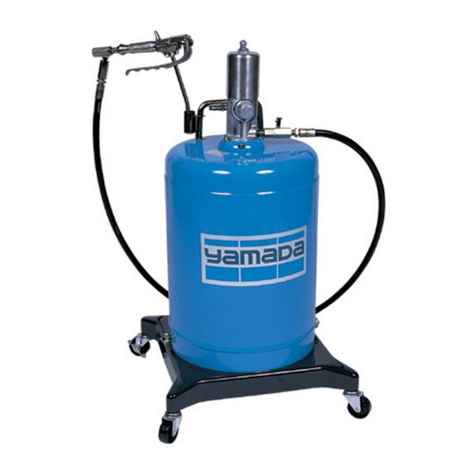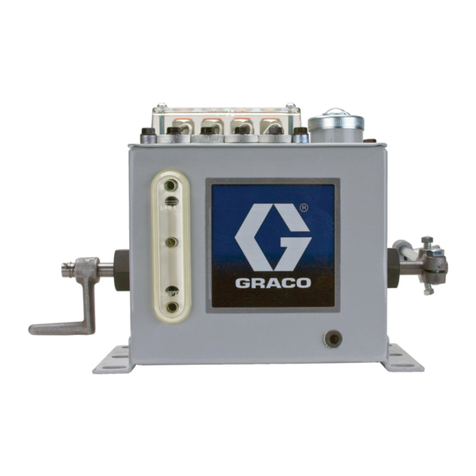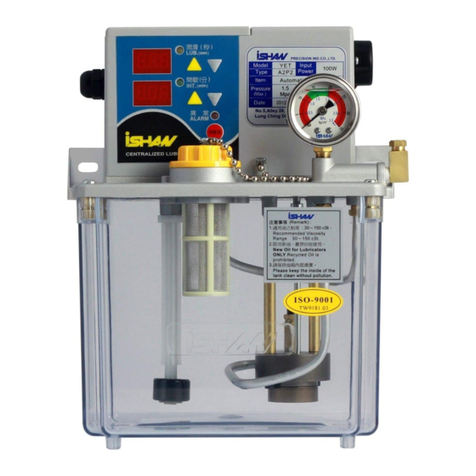
3
.Contents
1General 5
2Product Transport / Storage 5
3Main Component Definitions 6
4Preparation of Main Components for Installation 7
5Equipment Handling 8
6Typical Install Process 8
7Site Preparation 9
8Installation Trackside Items 12
8.1 Fitting the Trackside Cabinet to Mounting Base 12
8.2 Cabinet Door 13
8.3 Earth Bond 13
8.4 Lowering the Integral Lower Mast Unit 14
8.5 Option –Mast Removal / Alternative Lower Mast Orientation 14
8.6 Fitting the Upper Mast (wind turbine and / or solar power option) 15
8.7 Fitting the Solar Panel 15
8.8 Fitting the Wind Turbine 16
8.9 Raising the Integral Mast 17
8.10 Optional Mast Extension 18
8.11 Fitting of Cabinet Mounted Solar Panels 19
8.12 Battery Charger Electrical Connection 19
8.13 Solar & Wind Systems 20
8.14 Solar Systems - Mast Mounted 21
8.15 Solar Systems –Cabinet Mounted Panels 21
8.16 Mains Powered Systems 22
8.17 Battery Powered Systems 24
8.18 Replacing the Pump Sensor 24
9System Wiring Diagram 25
10 Installation of Track Items 26
10.1 Wheel sensor 26
10.2 Wheel sensor –Single Direction Operation 27
10.3 Blade System 29
10.4 Installing the Blade Rail Clamps (Standard Style) 29
10.5 Installing the Blades (Standard Style) 29
10.6 EasiBlade Installation 30
10.7 Outing of delivery hoses, Cabinet to blade 31
10.8 Fitting the Main Delivery Hoses 32
10.9 Fill the Hoses and Blade’s 33
11 Commissioning / Setting 34
11.1 Filling the Reservoir (Lid Lift Version) 34
11.2 Wheel sensor Heights and Operation 35
11.3 Pump Setting 35
11.4 Backlight & voltage display feature panel Error! Bookmark not defined.
11.5 Non backlight panel Error! Bookmark not defined.
11.6 Pump Settings / Operation 40
12 Routine Maintenance 41
12.1 Control Panel 41
12.2 Pump Setting 41
